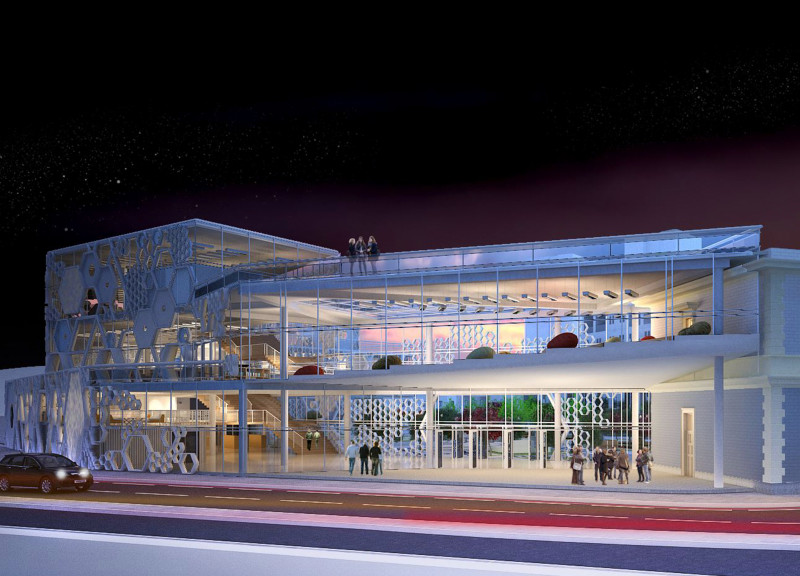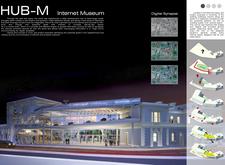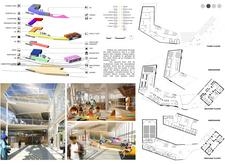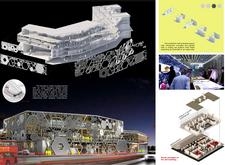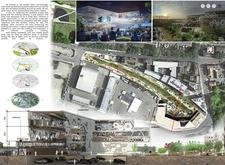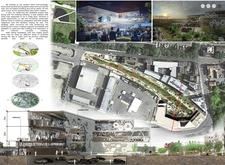5 key facts about this project
## Overview
The HUB-M Internet Museum is located in an urban setting that integrates with its surrounding river, parks, and underutilized spaces. Designed as a cultural institution and interactive hub, the museum seeks to facilitate communication and engagement among community members and visitors while reflecting the rapid advancements in technology. The architectural design is informed by the concept of the internet functioning as a digital synapse, promoting a dynamic interface between individuals and information.
## Spatial Strategy
The museum's spatial organization incorporates a variety of functional areas tailored for educational and recreational activities. The Main Entrance Hall establishes an inviting first impression that leads into the flexible Exhibition Hall, equipped for interactive displays that underscore the evolving nature of technology. The Library and IT Suite, located on the second floor, support collaborative learning, while dedicated dining and social areas encourage visitor interaction. Interconnected pathways and open sight lines facilitate an exploratory experience throughout the museum.
## Materiality and Contextual Response
The architectural materiality combines glass, metal, and concrete to create a cohesive and innovative structure. The extensive use of glass conveys transparency and modernity, while hexagonal metal frames evoke the aesthetics of digital networks, contributing both to the structural integrity and visual appeal of the facade. Concrete is utilized to provide stability, contrasting the lighter materials. Additionally, the design carefully considers the relationship with the surrounding environment, enhancing public spaces and creating vibrant community corridors that connect visitors to the riverfront and parks, fostering a sense of place and encouraging communal activities.


